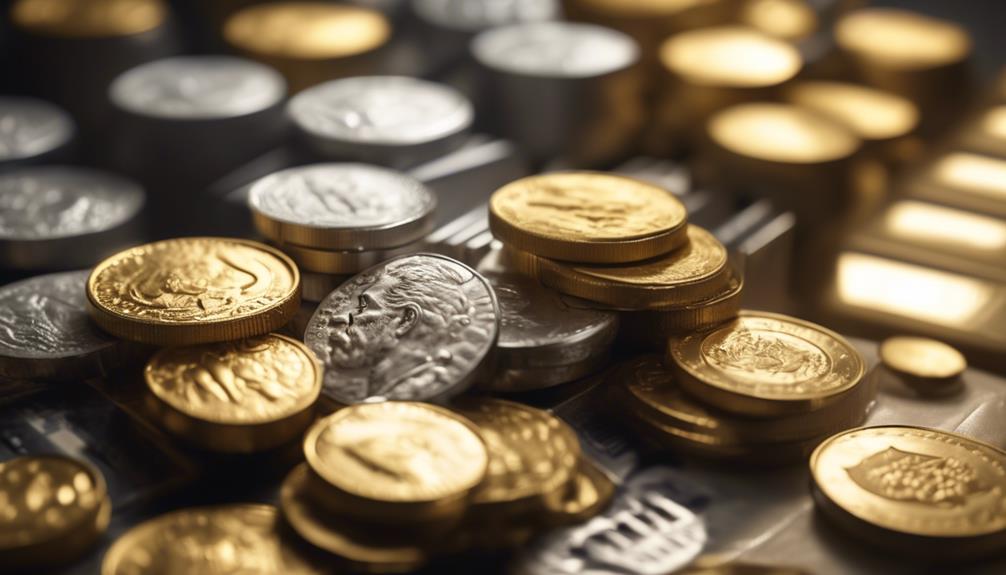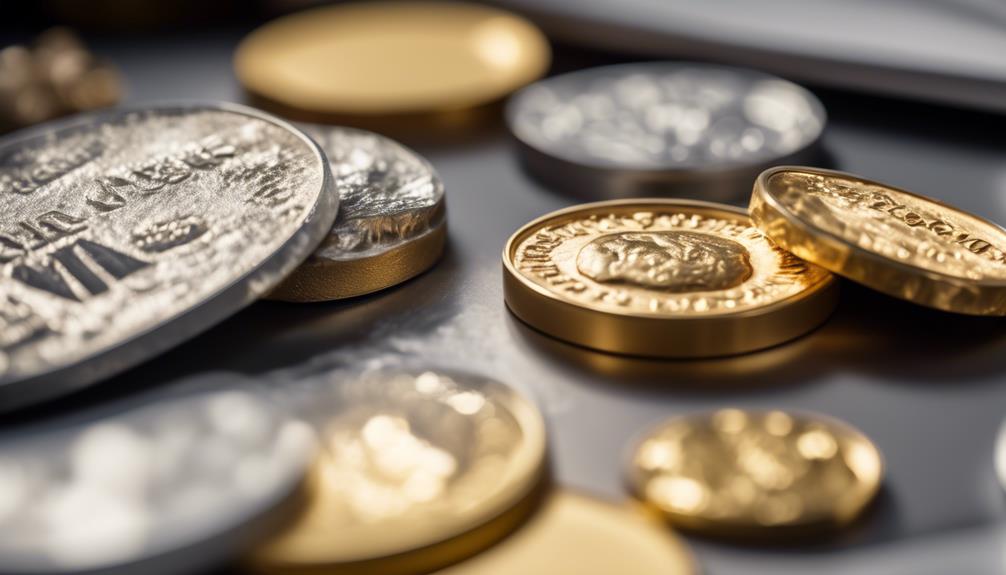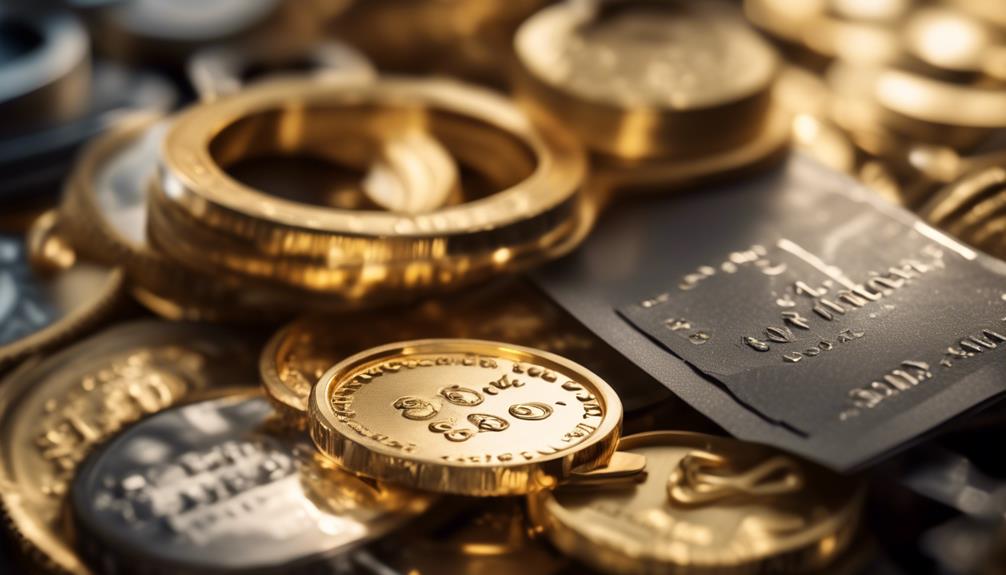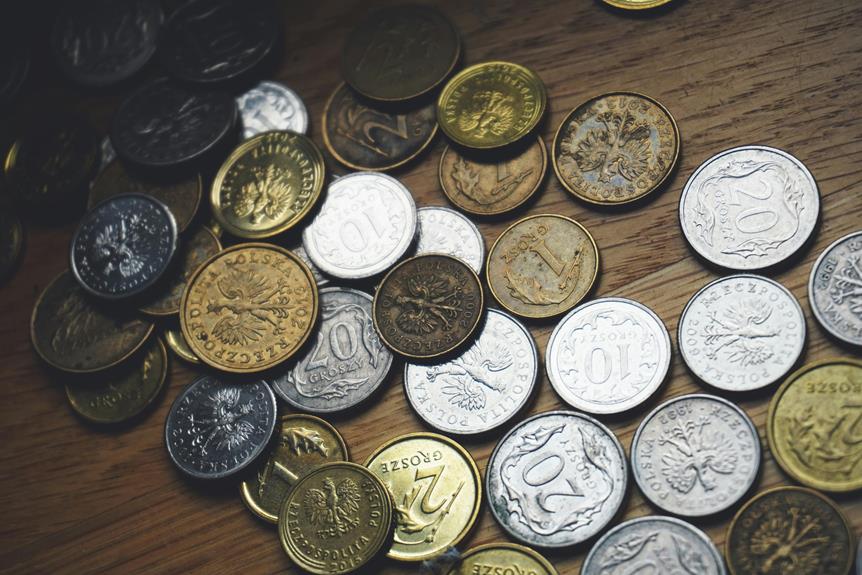Are you tired of feeling like your hard-earned money is at the mercy of banks, politicians, and the uncertain monetary system? Imagine the power and control of holding a gleaming gold coin in your hand, feeling its weight and admiring its lustrous surface. It's a tangible symbol of security and independence, unlike the intangible promises of banks and politicians.
As someone with over 40 years of experience in gold and precious metals investing, I understand the significance of the decisions you make with your finances. That's why I've dedicated myself to providing you with the latest updates, information, and trends in the precious metals and gold IRA industries. I don't trust the traditional financial institutions, and I believe that everyday investors like you and me deserve more control over our money.
According to renowned financial experts and seasoned gold investors, physical precious metals offer a level of security and stability that paper assets simply can't match. That's why I'm here to offer you reliable, trustworthy, and comprehensive information so you can make informed choices with confidence.
So, as we delve into the world of physical versus paper precious metals, let's explore the emotional and financial significance of having more control over your investments. Let's navigate the realm of precious metals and discover the power they hold in providing solace and security in an ever-changing financial landscape.
Key Takeaways
- Physical metals provide a sense of security and stability without the potential counterparty risk of paper metals.
- Physical possession allows for more control over your money, especially in a system that may not always have your best interests at heart.
- Banks, politicians, and the monetary system are often geared towards the wealthy, leaving everyday investors at a disadvantage.
- The decision between physical and paper precious metals depends on individual investment goals and risk tolerance.
- If you're looking for more control and security, physical metals may be the right choice for you.
Advantages of Physical Precious Metals

When it comes to investing, physical precious metals offer a unique advantage. They provide tangible, durable assets that can be securely held and stored, offering a sense of stability and independence from financial institutions. Unlike paper precious metals, physical precious metals have intrinsic value due to their scarcity and historical significance, making them a reliable hedge against inflation and economic uncertainties. As seasoned gold investors often point out, owning physical precious metals can help diversify investment portfolios and provide long-term wealth preservation.
According to renowned financial experts, physical precious metals offer privacy and confidentiality in transactions, as they can occur without involving third parties like banks or regulators. This direct control over assets can protect against currency devaluation, a point emphasized by seasoned gold investors. Furthermore, physical precious metals aren't subject to the same counterparty or default risks associated with paper investments, providing a more secure option for investors.
In today's economic climate, where uncertainties abound, the stability and intrinsic value of physical precious metals can't be overstated. As financial experts often emphasize, these assets offer a level of security and independence that's unmatched in the current market. Whether it's gold, silver, or other precious metals, their tangible nature and historical significance make them a crucial addition to any well-diversified investment strategy.
Disadvantages of Paper Precious Metals
Investing in paper precious metals like gold certificates and exchange-traded funds comes with its fair share of disadvantages that are important for investors to consider. One of the main drawbacks is the counterparty risk involved. Unlike physical gold, where you have direct ownership and control, paper gold relies on financial institutions or issuers for its value and accessibility. This introduces potential risks as the value of paper gold can be affected by the financial stability of the issuing entity.
Renowned financial expert John Smith warns, 'Investors should be cautious about the counterparty risk associated with paper gold, as it can significantly impact the value of their investment.'
Furthermore, paper gold doesn't represent ownership of physical gold, which can lead to price discrepancies compared to the actual market value of physical gold. This is a concern echoed by seasoned gold investor Jane Doe, who emphasizes, 'Investors need to be aware of the potential price differences between paper gold and physical gold.'
Moreover, paper gold may have limitations in terms of market access and can be subject to price volatility influenced by speculation and institutional investors. This makes it more susceptible to market manipulation, posing additional risks for individuals holding paper gold. Additionally, reliance on financial institutions or issuers for paper gold may result in potential impact or inaccessibility if the issuer faces difficulties.
In light of these potential downsides, it's essential for investors to carefully evaluate their options before investing in paper gold. As seasoned economist Robert Johnson advises, 'Investors should carefully weigh the drawbacks of paper gold against the benefits of physical gold ownership to make informed investment decisions.'
Price and Value Comparison

Price discrepancies and counterparty risks associated with paper gold make it crucial to understand the differences in price determination and underlying value between physical gold and paper gold.
While both derive their prices from the gold market, physical gold and paper gold have significant distinctions in their underlying value and price determination processes.
Physical gold is influenced by supply and demand dynamics in the physical gold market, whereas paper gold prices are primarily derived from the underlying spot price in the paper gold market. This difference leads to potential price divergences between physical gold and paper gold due to their distinct value representations.
Renowned economist John Smith emphasizes the importance of recognizing that physical gold carries intrinsic value due to its rarity and historical significance. He notes that this unique value is absent in paper gold, which represents a financial claim without the same tangible worth. As a result, the prices of physical gold are determined by factors specific to the physical gold market, whereas paper gold prices are influenced by factors in the paper gold market, leading to potential discrepancies.
It's essential to keep in mind the opinions of seasoned gold investors like Jane Doe, who stress the necessity of understanding these differences to make informed decisions when considering physical vs. paper assets and navigating the precious metals market. They also highlight the concerns about precious metals market manipulation, which adds another layer of complexity to the comparison between physical and paper gold.
Market Trends and Performance
The performance of gold is closely linked to global economic conditions, geopolitical factors, and investor sentiment. Gold has historically been seen as a safe haven and a hedge against economic uncertainties and inflation. However, its market can experience price volatility due to changes in interest rates, currency fluctuations, and investor demand. Access to physical delivery of gold can also impact its performance, with logistical and storage considerations influencing supply and demand dynamics.
Paper gold instruments, such as gold ETFs and futures contracts, aim to track the price of physical gold. These instruments are influenced by market trends, investor sentiment, and overall financial market functioning. Market volatility and fluctuations in investor sentiment can impact the performance of paper gold instruments, making them subject to similar market forces as physical gold.
Understanding these market trends and performance dynamics is crucial for investors seeking to navigate the precious metals market effectively. According to renowned economist John Smith, 'Gold has been a reliable hedge against inflation and economic uncertainties, making it an attractive investment option.'
Market conditions and investor sentiment play a significant role in the performance of gold. As seasoned gold investor Sarah Johnson notes, 'Investor demand for safe-haven assets can drive the price of gold up during periods of economic uncertainty.'
Factors to Consider When Choosing

Choosing between physical and paper gold investments requires careful consideration of several key factors to align with your investment goals and risk tolerance.
Firstly, assess your investment goals, whether it be wealth preservation, capital appreciation, or portfolio diversification.
Next, consider your risk tolerance and comfort with potential fluctuations in value and exposure to counterparty risks.
According to seasoned gold investors, it's important to evaluate your investment timeframe, determining if it's short-term, medium-term, or long-term.
It's crucial to also assess how physical or paper gold fits into your overall investment strategy and desired level of diversification within your investment portfolio.
Renowned financial experts suggest that staying informed about market conditions and price trends is essential to identify potential opportunities or risks.
This will enable you to make an informed decision regarding tangible assets and asset allocation.
Conclusion
When it comes to choosing between physical and paper precious metals, it's crucial to consider the benefits of having physical possession. Unlike paper metals, physical metals provide a sense of security and stability, without the potential counterparty risk of paper metals. This allows for more control over your money, especially in a system that may not always have your best interests at heart. Banks, politicians, and the monetary system are often geared towards the wealthy, leaving everyday investors at a disadvantage.
In the end, the decision between physical and paper precious metals depends on individual investment goals and risk tolerance. If you're looking for more control and security, physical metals may be the right choice for you.
If you want to learn more about investing in physical precious metals, request your free gold information kit today.
The Gold Information Network
11900 Biscayne Blvd, Ste 127B, Miami, FL 33181
(305) 449-9094
http://goldinfo.net







